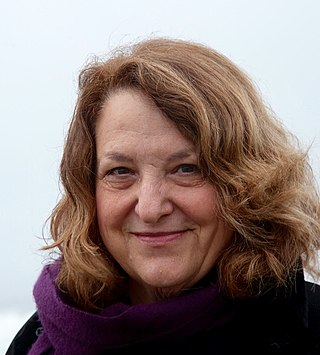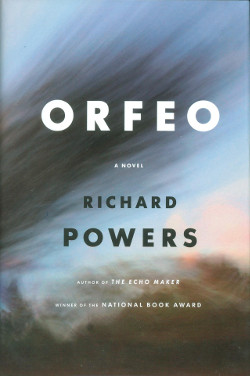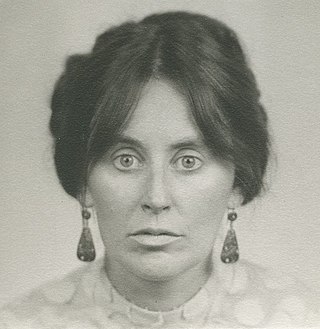
Paul Kurtz was an American scientific skeptic and secular humanist. He has been called "the father of secular humanism". He was Professor Emeritus of Philosophy at the State University of New York at Buffalo, having previously also taught at Vassar, Trinity, and Union colleges, and the New School for Social Research.

The Henry Art Gallery is a contemporary art museum located on the campus of the University of Washington, in Seattle, Washington, United States. Located on the west edge of the university's campus along 15th Avenue N.E. in the University District, it was founded in February, 1927, and was the first public art museum in the state of Washington. The original building was designed by Bebb and Gould. It was expanded in 1997 to 40,000 square feet (3,700 m2), at which time the 154-seat auditorium was added. The addition/expansion was designed by Gwathmey Siegel & Associates Architects.

Peter Weibel was an Austrian post-conceptual artist, curator, and new media theoretician. He started out in 1964 as a visual poet, then later moved from the page to the screen within the sense of post-structuralist methodology. His work includes virtual reality and other digital art forms. From 1999 he was the director of the ZKM Center for Art and Media Karlsruhe.

Kristine Stiles is the France Family Distinguished Professor of Art, Art History and Visual Studies at Duke University. She is an art historian, curator, and artist specializing in global contemporary art and trauma. Her most recent book is Concerning Consequences: Studies in Art, Destruction, and Trauma, University of Chicago Press, 2016. She is best known for her scholarship on artists’ writings, performance art, feminism, destruction and violence in art, and trauma in art. Stiles joined the faculty of Duke in 1988, and she has taught at the University of Bucharest and Venice International University. She received the Richard K. Lublin Distinguished Award for Undergraduate Teaching Excellence in 1994, and the Dean's Award for Excellence in Graduate Mentoring in 2011, both at Duke University. Among other fellowships and awards include a J. William Fulbright Fellowship in 1995, a Solomon R. Guggenheim Fellowship in 2000, and an Honorary Doctorate from Dartington College of Arts in Totnes, Devon, England in 2005.
Jeff Jahn is a curator, art critic, artist, historian, blogger and composer based in Portland, Oregon, United States. He coined the phrase declaring Portland "the capital of conscience for the United States," in a Portland Tribune op-ed piece, which was then reiterated in The Wall Street Journal.

The following are controversial invocations of the USA PATRIOT Act. The stated purpose of the Act is to "deter and punish terrorist acts in the United States and around the world, to enhance law enforcement investigatory tools, and for other purposes." One criticism of the Act is that "other purposes" often includes the detection and prosecution of non-terrorist alleged future crimes.

Critical Art Ensemble (CAE) is a collective of five tactical media practitioners of various specializations including computer graphics and web design, film/video, photography, text art, book art, and performance. For CAE, tactical media is situational, ephemeral, and self-terminating. It encourages the use of any media that will engage a particular socio-political context in order to create molecular interventions and semiotic shocks that collectively could diminish the rising intensity of authoritarian culture.

Lynn Hershman Leeson is an American multimedia artist and filmmaker. Her work with technology and in media-based practices is credited with helping to legitimize digital art forms. Her interests include feminism, race, surveillance, and artificial intelligence and identity theft through algorithms and data tracking.

Strange Culture is a 2007 American documentary film directed by Lynn Hershman Leeson and starring Tilda Swinton and Thomas Jay Ryan.
BioArt is an art practice where artists work with biology, live tissues, bacteria, living organisms, and life processes. Using scientific processes and practices such as biology and life science practices, microscopy, and biotechnology the artworks are produced in laboratories, galleries, or artists' studios. The scope of BioArt is a range considered by some artists to be strictly limited to "living forms", while other artists include art that uses the imagery of contemporary medicine and biological research, or require that it address a controversy or blind spot posed by the very character of the life sciences.

ASPECT was a biannual DVD magazine showcasing new media art. The magazine was headquartered in Boston, Mass. It ended publication with the issue 21 in 2013.

Beatriz da Costa was an interdisciplinary artist known for her work at the intersection of contemporary art, science, engineering, and politics. Her projects took the form of public interventions and workshops, conceptual tool building, and critical writing.
Machado Silvetti is an architecture and urban design firm headquartered in Boston, Massachusetts. Incorporated in 1985, the firm's principals Rodolfo Machado and Jorge Silvetti have been in association since 1974. They have been called "arguably Boston’s most influential firm of the last generation".

!Women Art Revolution is a 2010 documentary film directed by Lynn Hershman Leeson and distributed by Zeitgeist Films. It tracks the feminist art movement over 40 years through interviews with artists, curators, critics, and historians.

Orfeo is a novel by American author Richard Powers.
Claire Pentecost is an American artist, a writer, and Professor in the Department of Photography at the School of the Art Institute of Chicago, Chicago, Illinois. Her interdisciplinary practice interrogates the imaginative and institutional structures that organize divisions of knowledge, often focusing on nature and artificiality. Her work positions artistic practice as a research practice, advocating for the role of the amateur in the collection, interpretation, and mobilization of information. Her current projects focus on industrial and bioengineered agriculture, and the hidden costs of the global corporate food system.

Natasha Boas is a French-American contemporary art curator, writer, and critic. She has taught art history and curatorial studies at Yale, Stanford, and the San Francisco Art Institute. Her exhibition on the Modernist Algerian artist, Baya Mahieddine Baya: Woman of Algiers in 2018 at the Grey Art Gallery at New York University garnered her international critical attention. In 2017 she was featured in Lynn Hershman Leeson's Vertighost, playing the role of herself as an art historian. She also authored the Facebook Artist in Residence book on the recent history of Art and Technology in the Bay Area for the 5th anniversary of Facebook's artist-in-residency program. An adjunct professor at the California College of the Arts, she is an expert in the art of California countercultures, the modernist avant-garde, surrealist women artists, the Mission School and Outsider artists.
Jori Finkel is an American writer and editor who specializes in contemporary art. She is best known for analyzing the inner workings of the art market and for chronicling the Los Angeles art scene during its expansion at the beginning of the 21st century.

Moira Roth was an English-born American art historian, feminist art critic, and educator.
Dawn Luryn Hershman is an American oncologist. Since 2020, she has served as the American Cancer Society Professor of Medicine and Epidemiology at Columbia University.














